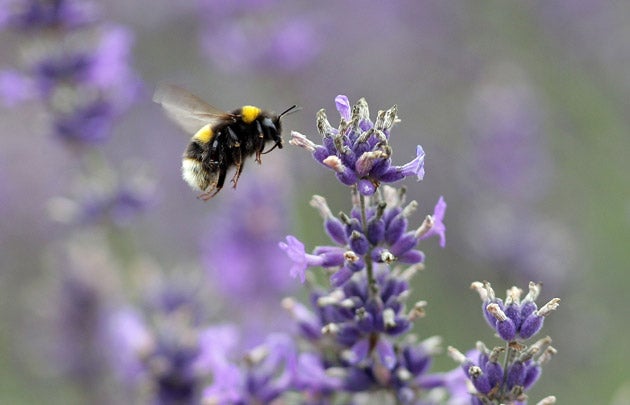Pet of the week: The bee

Your support helps us to tell the story
From reproductive rights to climate change to Big Tech, The Independent is on the ground when the story is developing. Whether it's investigating the financials of Elon Musk's pro-Trump PAC or producing our latest documentary, 'The A Word', which shines a light on the American women fighting for reproductive rights, we know how important it is to parse out the facts from the messaging.
At such a critical moment in US history, we need reporters on the ground. Your donation allows us to keep sending journalists to speak to both sides of the story.
The Independent is trusted by Americans across the entire political spectrum. And unlike many other quality news outlets, we choose not to lock Americans out of our reporting and analysis with paywalls. We believe quality journalism should be available to everyone, paid for by those who can afford it.
Your support makes all the difference.What's the buzz? This summer, if you want to get a low-maintenance "pet" with a free spirit who won't constantly be craving affection, then you need to start considering taking up beekeeping. Natural colonies in the wild have been all but wiped out, and whole species are under attack from a mite with a name more becoming of a cartoon villain – the Varroa Mite. Add to this the allegedly harmful effects of pesticides used in intensive farming, which get fed back into the hives, and it is easy to see how the bee population has been whittled away. It is only thanks to the efforts of beekeepers around the country that we have any bees in Britain at all. A sobering thought.
So, how can we help? Bees form such a vital link in the food chain, that it seems absurd not to get involved. The best thing to do would be to start by learning how to keep bees and eventually acquire a colony of bees that are happy to go out pollinating all day and make honey. But I realise that this does not seem practical for many urban dwellers. Having said this, we should all take heart from Steve Benbow of the London Honey Company (londonhoneycompany.co.uk) who has devoted his time to bees and honey production in the capital. He produces honey for Fortnum & Mason and has set up a colony on the roof of the Piccadilly emporium (you can follow the hive's progress and watch more "Bee" movies at his website).
Fascinating creatures, aren't they? The caste system that has evolved within the hive is nothing short of mind-boggling. The single queen develops from a few of the many thousand female larvae that may exist in a large colony. Natural selection determines which of these queens is to be the new heir to the throne when the old queen gets tired of opening hospital wings and knighting rock stars. The larva is fed on copious amounts of royal jelly, whereupon she reaches sexual maturity and produces millions of eggs which keep the colony alive. And so on. It is the job of the male simply to mate with the queen bee then, in a move that would no doubt have cheered Andrea Dworkin, to get chased away from the colony to die in exile having served their purpose.
What else? According to Dr Ivor Davis, advisor to the British Beekeepers' Association, they have amazing navigational instincts – once they have found a food source, they relay this to other bees by performing a "waggle dance" which telegraphs its co-ordinates. Oh, and they are amazingly fuel-efficient; a bee could fly round the world on just one ounce of honey. Fact.
And what's the difference between a bumble bee and a honey bee? Bumble bees – the plumper, furry ones – belong to a colony that only survives one summer, then dies, leaving just a few queens to hibernate throughout winter before emerging to build up new colonies. Honey bee colonies can live for many years. They spend the summer making honey to provide them with enough food to last the winter. According to Dr Davis, when honey is harvested from a hive, humans take about 20 per cent of their annual haul, so there's plenty left for the bees.
So how can we best encourage bees into our lives? By planting single-flowering plants and vegetables – alliums, all types of mint, beans and flowering herbs. Daisy-shaped flowers such as asters and sunflowers, also tall plants – hollyhocks, larkspur and foxgloves.
How do I get hold of a bee? Visit britishbee.org.uk
Join our commenting forum
Join thought-provoking conversations, follow other Independent readers and see their replies
Comments